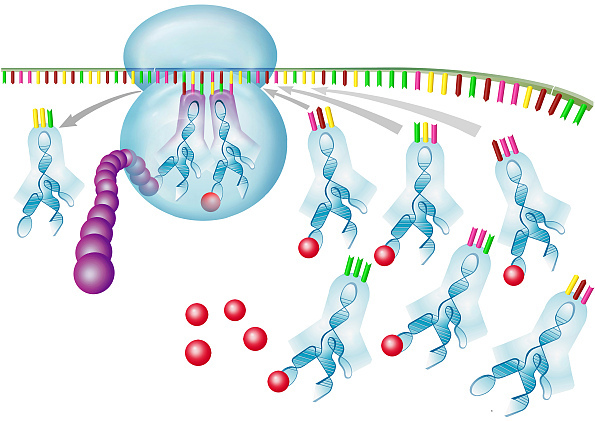Bioactive Collagen Peptides
Bioactive Collagen Peptides (e.g. Collagile pet) are specific protein fragments that have a positive effect on the state and function of the body and can ultimately influence health by modulating physiological processes [Gómez-Guillén et al. 2011]. They usually consist of 2 to 20 amino acids per molecule which corresponds to a molecular weight of approx. 0.2 to 6.2 kDa*. As long as they are part of the protein, they do not develop their properties; i.e., they must first be released to have an effect. This occurs either by natural digestive processes in the gastrointestinal tract, by bacterial fermentation, or via targeted production.
Bioactive Collagen Peptides (e.g. Collagile pet) have to be absorbed by the body and transported to their target location.
It is known, for example, that milk and whey proteins contain peptides which can influence physiological processes of the immune system, the cardiovascular system, and the nervous system. There is also intensive research on peptides derived from other foodstuff, e.g., peptides derived from material rich in collagen.
Collagen is the most important structural protein of vertebrates, accounting for 25 – 35% of the total protein content. Collagen peptides are biocompatible and safe due to their structural and biological properties as well as their wide distribution [Fu et al. 2018]. As they belong to our nature, humans have been used to them from time immemorial. Several effects, such as antihypertensive, antidiabetic, antioxidant, and health-promoting effects on bones, joints, and the skin have been attributed to Bioactive Collagen Peptides [Fu et al. 2018]. Research on collagen peptides is promising although their special potential still has to be confirmed through clinical studies.
We are eager to keep this website up to date. You will find the date of the last update at the end of each chapter. References can be found at Overview of Literature and References.
* kDa = kilodalton, 1 kDa = 1,000 dalton / atomic mass unit
The following figure shows the process of protein biosynthesis
Last update: December 2022
